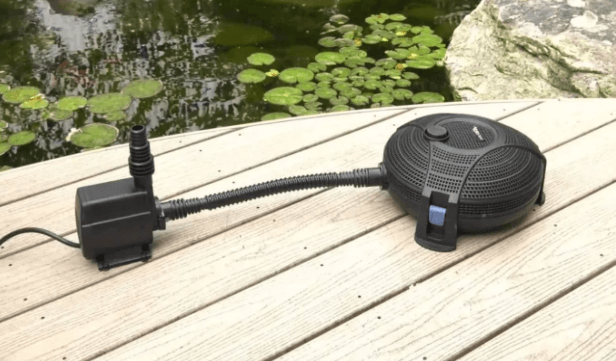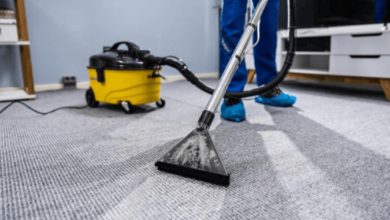The Smart Way to Keep Your Pond Clear with Less Effort

A clean, sparkling pond doesn’t just happen by chance it takes the right tools and a smart system. One of the most efficient ways to achieve consistently clear water is by using an advanced pond filter that does the heavy lifting for you. Among the various types available, a specific technology has emerged as the most effective and hassle-free option for pond lovers: the automatic drum-style pond filter.
Whether you’re maintaining a koi pond or a lush backyard water feature, this modern filtration solution brings both clarity and simplicity to your pond management routine.
Understanding How Modern Pond Filters Work
At the core of a quality pond filter is the ability to separate unwanted debris from your water before it causes problems. Drum filters are engineered to do exactly that. Shaped like a barrel and equipped with a fine mesh screen, these filters spin to catch waste particles such as uneaten food, fish waste, and decaying leaves.
Once the mesh begins to collect enough debris, the system detects reduced water flow and activates a rinse cycle. Clean water is sprayed across the mesh to wash away the buildup, and the dirty water is sent out through a drain. The process repeats automatically, often multiple times a day, depending on your pond’s activity and waste levels.
Why Choose This Type of Pond Filter?
Not all pond filters are created equal. Here’s why so many pond owners—especially those with fish-rich environments—are turning to these intelligent systems:
Cleaner Water, Fewer Chemicals
These filters are exceptional at removing even the tiniest particles from your pond. This means you’ll deal with less algae, fewer harmful compounds like ammonia, and a significantly reduced need for chemical treatments or water changes.
Hands-Off Operation
One of the biggest benefits is the automatic cleaning feature. Unlike traditional pond filters that require frequent manual rinsing, this system takes care of itself. It senses when the screen needs a clean and handles it without interrupting the flow of clean water back into your pond.
Ideal for Fish-Heavy Ponds
If you keep koi or maintain a densely populated pond, you’re familiar with how quickly waste builds up. A powerful drum filter handles large amounts of debris with ease, helping maintain a stable and healthy aquatic environment even under heavy load.
Protects Biological Filters
By removing solids early, these systems prevent excess organic waste from clogging or overwhelming your biofiltration media. That means your beneficial bacteria can focus on processing dissolved waste more efficiently.
The Process: From Dirty to Clean
Understanding how the system operates will help you appreciate its value:
- Water Entry – Pond water enters the chamber and flows toward the rotating drum.
- Filtration – The water passes through a finely meshed screen while debris collects on the surface.
- Trigger Cycle – When the flow slows due to buildup, a water level sensor kicks in.
- Automatic Cleaning – A set of spray nozzles sprays clean water on the screen as the drum rotates.
- Waste Discharge – Flushed debris exits through a waste outlet, and the filter resets for the next cycle.
This process takes only a few seconds and runs quietly and efficiently in the background.
Picking the Best Fit for Your Pond
Before purchasing, it’s important to choose a pond filter that suits your specific setup. Here are some key factors to evaluate:
- Pond Volume – Make sure the filter is rated for your pond’s water capacity.
- Fish Load – More fish mean more waste. Match the system’s power to your stocking levels.
- Pump Compatibility – The flow rate of your pump should align with the filter’s specifications.
- Installation Setup – Some systems are designed for above-ground setups; others may require underground installation.
Top brands known for their reliability and quality in this space include Evolution Aqua, Oase, Burtons, and ProfiDrum.
Setting It Up the Right Way
You don’t have to be a professional to install one of these filters, although some technical knowledge does help. Most systems come with detailed diagrams, and components are built for durability and easy access.
Features you might find include:
- Sturdy inlets and outlets for water movement
- Optional UV clarifiers to control algae growth
- Digital or manual control panels for ease of monitoring
Routine upkeep is minimal—just a quick visual check now and then to ensure the spray nozzles and mesh are in good shape. Many filters work flawlessly for years without significant intervention.
Long-Term Benefits You’ll Notice
Beyond just cleaner water, investing in the right pond filter comes with broader advantages that enhance the entire pond-keeping experience:
- Less Manual Work – The days of hosing down filter sponges or scrubbing out chambers are gone.
- Healthier Aquatic Life – Cleaner water means reduced stress on fish and plants.
- Consistent Performance – No more surprises like cloudy water or foul smells.
- Durability – These systems are built for long-term use, with many lasting well over a decade with basic care.
Whether your pond is a peaceful escape or a prized koi showcase, this type of filtration system allows you to enjoy it rather than constantly maintain it.
Clearing Up Confusion
Can I use a drum-style pond filter in a small garden pond?
Yes, but it’s most beneficial in medium to large ponds or ones with a heavy fish population. For very small ponds, simpler systems might be more cost-effective unless you’re planning to expand.
Does it require electricity all the time?
The filter operates with electric components such as the drum motor and cleaning nozzles, but these only activate during the brief cleaning cycles. Power use is typically minimal.
What maintenance does it need?
Occasional checks on seals, mesh condition, and the spray bar are usually sufficient. Most owners report spending less than 15 minutes a month on upkeep.
Are they noisy?
No. While there’s a brief sound during the rinse cycle, it’s short-lived and much quieter than many traditional filters.
Is a biological filter still necessary?
Yes. This type of pond filter handles mechanical waste removal. You’ll still need a biological filter to break down dissolved waste and maintain water chemistry.
Final Thoughts
If you’re aiming for long-term water clarity with less effort and more reliability, investing in a quality pond filter system is a smart choice. Drum-style filters, in particular, deliver automated, precise, and powerful filtration that supports a thriving aquatic environment. Whether you care for koi or simply want a low-maintenance water feature, this solution checks all the right boxes: quiet operation, cleaner water, and peace of mind.







